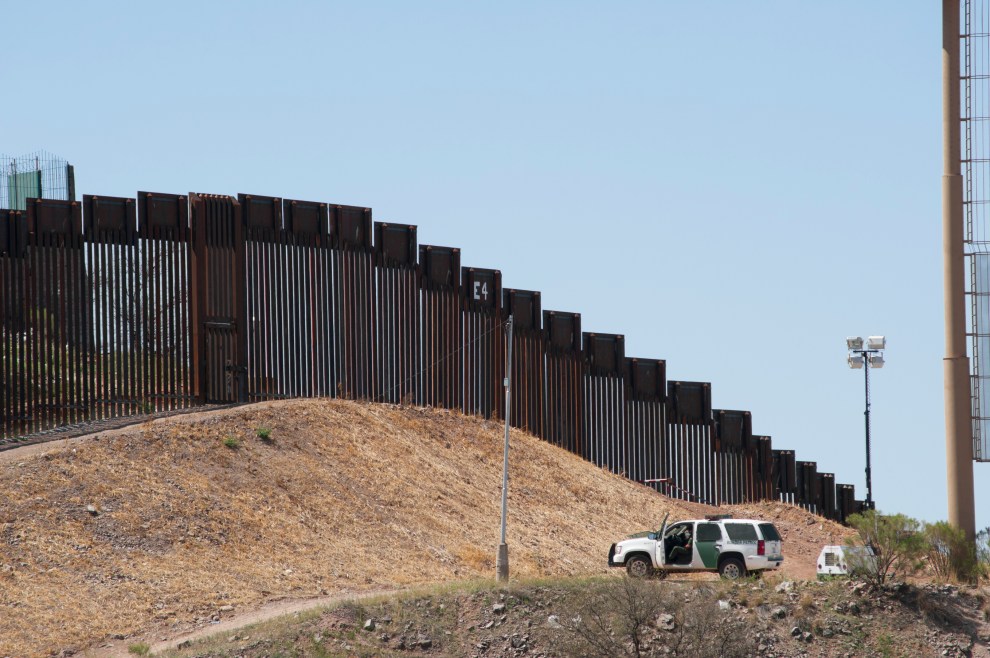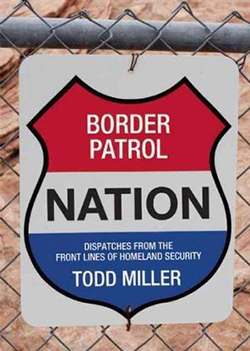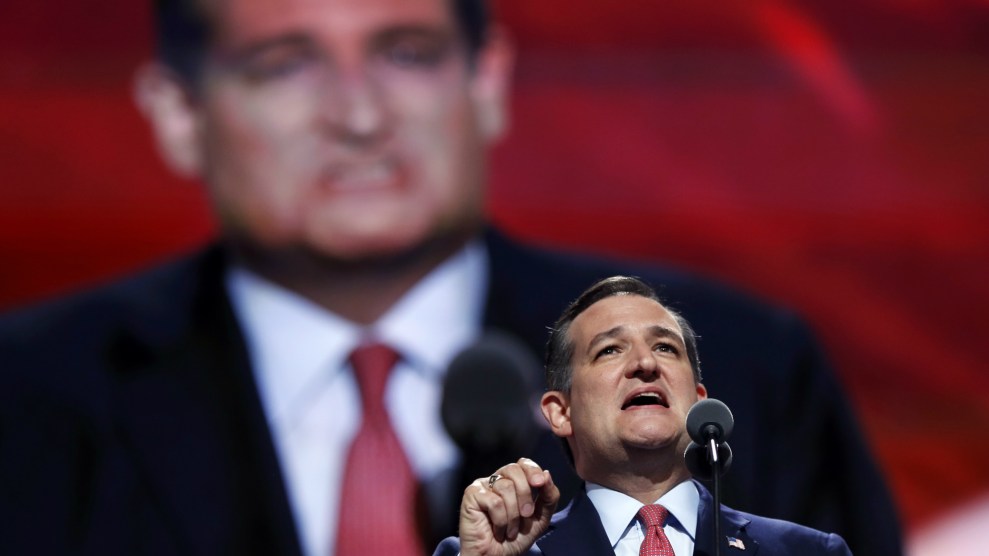
Nogales, Arizona borderChapin31/iStock
This story first appeared on the TomDispatch website.
At the federal courthouse, Ignacio Sarabia asks the magistrate judge, Jacqueline Rateau, if he may explain why he crossed the international boundary between the two countries without authorization. He has already pleaded guilty to the federal misdemeanor commonly known as “illegal entry” and is about to receive a prison sentence. On either side of him are eight men in the same predicament, all still sunburned, all in the same ripped, soiled clothes they were wearing when arrested in the Arizona desert by agents of the US Border Patrol.
Once again, the zero tolerance border enforcement program known as Operation Streamline has unfolded just as it always does here in Tucson, Arizona. So far today, close to 60 people have already approached the judge in groups of seven or eight, their heads bowed submissively, their bodies weighed down by shackles and chains around wrists, waists, and ankles. The judge hands out the requisite prison sentences in quick succession—180 days, 60 days, 90 days, 30 days.
On and on it goes, day in, day out. Like so many meals served in fast-food restaurants, 750,000 sentences of this sort have been handed down since Operation Streamline was launched in 2005. This mass prosecution of undocumented border crossers has become so much the norm that one report concluded it is now a “driving force in mass incarceration” in the United States. Yet it is but a single program among many overseen by the massive US border enforcement and incarceration regime that has developed during the last two decades—particularly in the post-9/11 era.
Sarabia takes a half-step forward. “My infant is four months old,” he tells the judge in Spanish. The baby was, he assures her, born with a heart condition and is a US citizen. They have no option but to operate. This is the reason, he says, that “I’m here before you.” He pauses.
“I want to be with my child, who is in the United States.”
It’s clear that Sarabia would like to gesture emphatically as he speaks, but that’s difficult, thanks to the shackles that constrain him. Rateau fills her coffee cup as she waits for his comments to be translated into English.

In April 2016, Republican presidential candidate Donald Trump, still in the heat of his primary campaign, stated once again that he would build a massive concrete border wall towering 30 (or, depending on the moment, 55) feet high along the 2,000 mile US-Mexican border. He would, he insisted, force Mexico to pay for the $8 billion to $10 billion barrier. Repeatedly throwing such red meat into the gaping jaws of nativism, he has over these past months also announced that he would create a major “deportation force,” repeatedly sworn that he would ban Muslims from entering the country (a position he regularly revises) and, most recently, that he would institute an “extreme vetting” process for foreign nationals arriving in the United States.
Back in June 2015, when Trump first rode a Trump Tower escalator into the presidential campaign, among his initial promises was the building of a “great” and “beautiful” wall on the border. (“And no one builds walls better than me, believe me. I will do it very inexpensively. I will have Mexico pay for that wall.”) As he pulled that promise out of a hat with a magician’s flair, the actual history of the border disappeared. From then on in Election 2016, there was just empty desert and Donald Trump.
Suddenly, there hadn’t been a bipartisan government effort over the last quarter-century to put in place an unprecedented array of walls, detection systems, and guards for that southern border. In those years, the number of Border Patrol agents had, in fact, quintupled from 4,000 to more than 21,000, while Customs and Border Protection became the largest federal law enforcement agency in the country with more than 60,000 agents. The annual budget for border and immigration enforcement ballooned from $1.5 billion to $19.5 billion, a more than twelvefold increase. By 2016, federal funding of border and immigration enforcement added up to $5 billion more than funding for all other federal law enforcement agencies combined.
Operation Streamline, a cornerstone program in the so-called Consequence Delivery System, part of a broader Border Patrol deterrence strategy for stopping undocumented immigration, is just one part of a vast enforcement-incarceration-deportation machine. The program is as no-nonsense as its name suggests. It’s not The Wall, but it embodies the logic of the wall: Either you crossed “illegally” or you didn’t. It doesn’t matter why, or whether you lost your job, or if you’ve had to skip meals to feed your kids. It doesn’t matter if your house was flooded or the drought dried up your fields. It doesn’t matter if you’re running for your life from drug cartel gunmen or the very army and police forces that are supposed to protect you.
This system was what Ignacio Sarabia faced a few months ago in a Tucson courtroom a mere seven blocks from where I live.
Before I tell you how the judge responded to his plea, it’s important to understand Sarabia’s journey, and that of so many thousands like him who end up in this federal courthouse day after day. As he pleads to be with his newborn son, his voice cracking with emotion, his story catches the already Trumpian style of border enforcement—both the pain and suffering it has caused, and the strategy and massive buildup behind it—in ways that the campaign rhetoric of both parties and the reporting on it doesn’t. As reporters chase their tails attempting to explain Trump’s wild and often unfounded claims and declarations, the on-the-ground border reality goes unreported. Indeed, one of the greatest “secrets” of the 2016 campaign (though it should be common knowledge) is that the border wall already exists. It has existed for years, and the fingerprints all over it aren’t Donald Trump’s but those of Bill and Hillary Clinton.
Twenty-one years before Trump’s wall-building promise (and seven years before the 9/11 attacks), the US Army Corps of Engineers began to replace the chain link fence that separated Nogales, Sonora (in Mexico) from Nogales, Arizona, with a wall built of rusty landing mats from the Vietnam and Persian Gulf wars. Although there had been various half-hearted attempts at building border walls throughout the 20th century, this was the first true effort to build a barrier of what might now be called Trumpian magnitude.
That rusty, towering wall snaked through the hills and canyons of northern Sonora and southern Arizona, forever deranging a world that, given cross-border familial and community ties, then considered itself one. At the time, who could have known that the strategy the first wall embodied would remain the model for today’s massive system of exclusion.
In 1994, the perceived threat wasn’t terrorism. In part, the call for more hardened, militarized borders came in response, among other things, to a never-ending drug war. It also came from US officials who anticipated the displacement of millions of Mexicans after the implementation of the new North American Free Trade Agreement (NAFTA), which, ironically, was aimed at eliminating barriers to trade and investment across North America.
The expectations of those officials proved well justified. The ensuing upheavals in Mexico, as analyst Marco Antonio Velázquez Navarrete explained to me, were like the aftermath of a war or natural disaster. Small farmers couldn’t compete against highly subsidized US agribusiness giants like Cargill and Archer Daniels Midland. Mexican small-business owners were bankrupted by the likes of Walmart, Sam’s Club, and other corporate powers. Mining by foreign companies extended across vast swaths of Mexico, causing territorial conflicts and poisoning the land. The unprecedented and desperate migration that followed came up against what might be considered the other side of the Clinton doctrine of open trade: walls, increased border agents, increased patrolling, and new surveillance technologies meant to cut off traditional crossing spots in urban areas like El Paso, San Diego, Brownsville, and Nogales.
“This administration has taken a strong stand to stiffen the protection of our borders,” President Bill Clinton said in 1996. “We are increasing border controls by 50 percent.”
Over the next 20 years, that border apparatus would expand immensely in terms of personnel, resources, and geographic reach, but the central strategy of the 1990s (“Prevention Through Deterrence“) remained the same. The ever-increasing border policing and militarization funneled desperate migrants into remote locations like the Arizona desert, where temperatures can soar to 120 degrees in the summer.
The first US border strategy memorandum in 1994 predicted the tragic future we now have: “Illegal entrants crossing through remote, uninhabited expanses of land and sea along the border can find themselves in mortal danger.”
Twenty years later, more than 6,000 remains have been found in the desert borderlands of the United States. Hundreds of families continue to search for disappeared loved ones. The Colibri Center for Human Rights has records for more than 2,500 missing people last seen crossing the US-Mexico border. In other words, that border has become a graveyard of bones and sadness.
Despite all the attention given to the wall and the border this election season, neither the Trump nor Clinton campaigns have mentioned “Prevention Through Deterrence,” nor the subsequent border deaths. Not once. The same goes for the establishment media that can’t stop talking about Trump’s wall. There has been little or no mention of what border groups have long called a “humanitarian crisis” of deaths that have increased fivefold over the last decade, thanks, in part, to a wall that already exists. (If the dead were Canadians or Europeans, attention would, of course, be paid.)
Although wall construction began during Bill Clinton’s administration, the Department of Homeland Security (DHS) built most of the approximately 700 miles of fencing after the Secure Fence Act of 2006 was passed. Sen. Hillary Clinton voted in favor of that Republican-introduced bill, as did 26 other Democrats. “I voted numerous times when I was a senator to spend money to build a barrier to try to prevent illegal immigrants from coming in,” she commented at one 2015 campaign event, “and I do think you have to control your borders.”
The wall-building project was expected to be so environmentally destructive that then Homeland Security chief Michael Chertoff waived 37 environmental and cultural laws in the name of national security. In this way, he allowed Border Patrol bulldozers to desecrate protected wilderness and sacred land. “Imagine a bulldozer parking in your family graveyard, turning up bones,” Chairman Ned Norris, Jr. of the Tohono O’odham Nation (a tribe whose original land was cut in half by the border) told Congress in 2008. “This is our reality.”
With a price tag of, on average, $4 million a mile, these walls, barriers, and fences have proved to be one of the costliest border infrastructure projects undertaken by the United States. For private border contractors, on the other hand, it’s the gift that just keeps on giving. In 2011, for example, the DHS granted Kellogg, Brown, and Root, a subsidiary of Halliburton (one of our “warrior corporations“), a $24 million upkeep contract.
In Tucson in early August, Republican vice presidential candidate Mike Pence looked out over a sea of red “Make America Great Again” caps and T-shirts and said, “We will secure our border. Donald Trump will build that wall.” Pence was met with roaring applause, even though his statement made no sense at all.
Should Trump actually win, how could he build something that already exists? For all practical purposes, the “Great Wall” that Trump talks about may, by January 2017, be as antiquated as the Great Wall of China given the new high-tech surveillance methods now coming on the market. These are being developed in a major way and on a regular basis by a booming border techno-surveillance industry.
The 21st-century border is no longer just about walls—it’s about biometrics and drones. It’s about a “layered approach to national security,” given that, as former Border Patrol chief Mike Fisher has put it, “the international boundary is no longer the first or last line of defense, but one of many.” Hillary Clinton’s promise of “comprehensive immigration reform”—to be introduced within her first 100 days in office—is a much more reliable guide to our grim immigration future than is Trump’s wall. If her bill follows the pattern of previous ones, as it surely will, an increasingly weaponized, privatized, high-tech, layered border regime, increasingly dangerous to future Ignacio Sarabias, will continue to be a priority of the federal government.
On the surface, there are important differences between the two candidates’ immigration platforms. Trump’s wildly xenophobic comments and declarations are well known, and Clinton claims that she will, among other things, fight for family unity for those forcibly separated by deportation and enact “humane” immigration enforcement. Yet deep down, their policies are far more similar than they might at first appear.
That April day, only one bit of information about Ignacio Sarabia’s border crossing to reunite with his wife and newborn child was available at the Tucson federal courthouse: He had entered the United States “near Nogales.” Most likely he circumvented the wall first started during the Clinton administration, as most immigrants do, by making his way through the potentially treacherous canyons that surround that border town.
If his experience was typical, he probably didn’t have enough water or food and suffered some physical woe like large, painful blisters on his feet. Certainly, he wasn’t atypical in trying to reunite with loved ones: More than 2.5 million people have been expelled from the country by the Obama administration, an average annual deportation rate of close to 400,000. This was, by the way, only possible thanks to laws signed by Bill Clinton in 1996 and meant to burnish his legacy. They vastly expanded the government’s deportation powers.
In 2013 alone, Immigration and Customs Enforcement carried out 72,000 deportations of parents who said their children were American-born. And many of them are likely to try to cross that dangerous southern border again to reunite with their families.
The enforcement landscape Sarabia faced has changed drastically since that first wall was built in 1994. The post-9/11 border is now both a war zone and a showcase for corporate surveillance. It represents, according to Border Patrol agent Felix Chavez, an “unprecedented deployment of resources,” any of which could have led to Sarabia’s capture. It could have been one of the hundreds of remote video or mobile surveillance systems, or one of the more than 12,000 implanted motion sensors that set off alarms in hidden operational control rooms where agents stare into large monitors.
It could have been the spy towers made by the Israeli company Elbit Systems that spotted him, or Predator B drones built by General Atomics, or VADER radar systems manufactured by the defense giant Northrup Grumman, which like so many similar technologies have been transported from the battlefields of Afghanistan and Iraq to the US-Mexico border.
If the comprehensive immigration reform Hillary Clinton pledges to introduce as president is based on the existing bipartisan Senate package, then this corporate-enforcement landscape will be significantly bolstered and reinforced. There will be 19,000 more Border Patrol agents roving around “border enforcement jurisdictions” that extend up to 100 miles inland. More F-150 trucks and all-terrain vehicles will rumble through and, at times, tear up the desert. There will be more Blackhawk helicopters, flying low, their propellers dusting groups of scattering migrants, many of them already lost in the vast, parched desert.
If such a package passes the next Congress, up to $46 billion could be slated to go into more of all of this, including funding for hundreds of miles of new walls. Corporate vendors are salivating at the thought of such a future and in a visible state of elation at homeland security trade shows across the globe.
The 2013 bill that passed in the Senate but failed in the House also included a process of legalization for the millions of undocumented people living in the United States. It maintained programs that will grant legal residence for children who came to the United States at a young age, along with their parents. Odds are that a comprehensive reform bill in a Clinton presidency would be similar.
Included in that bill was funding to bolster Operation Streamline. The Evo A. DeConcini Federal Courthouse in Tucson would have the capacity to prosecute triple the number of people it deals with at present.
After taking a sip from her coffee and listening to the translation of Ignacio Sarabia’s comments, the magistrate judge looks at him and says she’s sorry for his predicament.
Personally, I’m mesmerized by his story as I sit on a wooden bench at the back of the court. I have a child the same age as his son. I can’t imagine his predicament. Not once while he talks does it leave my mind that my child might even have the same birthday as his.
The judge then looks directly at Sarabia and tells him that he can’t just come here “illegally,” that he has to find a “legal way”—highly unlikely, given the criminal conviction that will now be on his record. “Your son, when he gets better, and his mother,” she says, “can visit you where you are in Mexico.”
“Otherwise,” the judge adds, he’ll be “visiting you in prison.” And that’s not exactly, she points out, an appealing scenario: seeing your father in a prison where he will be “locked away for a very long time.”
She then sentences the nine men standing side by side in front of her to prison stints ranging from 60 to 180 days for the crime of crossing an international border without proper documents. Sarabia receives 60 days.
Next, armed guards from G4S—the private contractor that once employed Omar Mateen (the Pulse nightclub killer) and has a lucrative quarter-billion-dollar border contract with Customs and Border Protection—will transport the shackled men to a Corrections Corporation of America private prison in Florence, Arizona. There, behind layers of coiled razor wire, Sarabia will have time to think about his sick child while the CCA collects $124 per day for incarcerating the father.
Donald Trump’s United States doesn’t await his presidency. It’s already laid out before us. And one place it’s happening every single day is in Tucson, only seven blocks from my house.
Todd Miller is the author of Border Patrol Nation: Dispatches From the Front Lines of Homeland Security. You can follow him on Twitter @memomiller.















